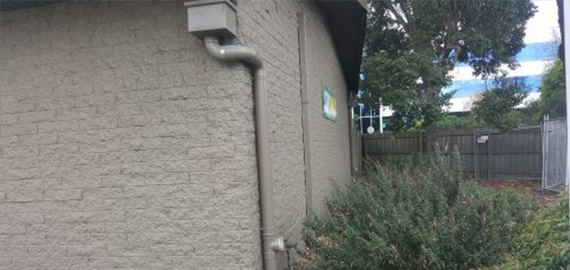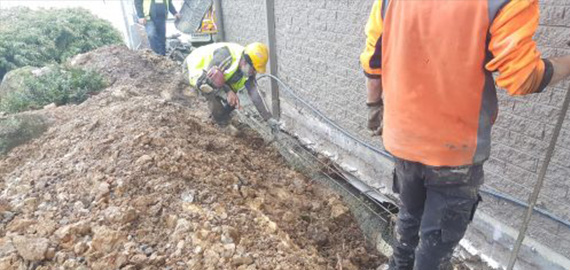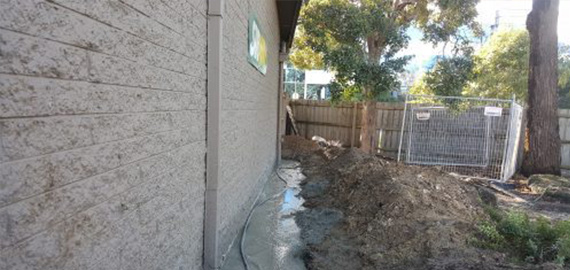14/53-55 Garden Drive
Tullamarine VIC 3043
Underpinning
In construction, underpinning is the process of strengthening and stabilizing the foundation of an existing building or other structure. Underpinning may be necessary for a variety of reasons:
- The original foundation is simply not strong or stable enough.
- The usage of the structure has changed.
- The properties of the soil supporting the foundation may have changed (possibly through subsidence) or were mischaracterized during design.
- Being an experienced industrial builders Melbourne, we have observed that construction of nearby structures necessitates the excavation of soil supporting existing foundations.
- It is more economical, due to land price or otherwise, to work on the present structure’s foundation than to build a new one.
BEAM AND BASE UNDERPINNING —
The beam and base method of underpinning is a more technically advanced adaptation of traditional mass concrete underpinning. A reinforced concrete beam is constructed below, above or in replacement of the existing footing. The beam then transfers the load of the building to mass concrete bases, which are constructed at designed strategic locations. Base sizes and depths are dependent upon the prevailing ground conditions. Beam design is dependent upon the configuration of the building and the applied loads. Anti-heave precautions are often incorporated in schemes where potential expansion of clay soils may occur.
MASS CONCRETE UNDERPINNING —
Also known as ‘traditional underpinning,’ the mass concrete underpinning method is nearly 100 years in age, and the protocol has not changed since. This underpinning method strengthens an existing structure’s foundation by digging boxes by hand underneath and sequentially pouring concrete in a strategic order. The final result is basically a foundation built underneath the existing foundation. This underpinning method is generally applied when the existing foundation is at a shallow depth, however, the method still works very well even at fifty feet deep. The method has not changed since its inception with its use of utilitarian tools such as shovels and post hole diggers. Heavy machinery is not called for in this method due to the tight nature of the boxes being dug. There are several advantages to using this method of underpinning including the simplicity of the engineering, the low cost of labor to produce the result, and the continuity of the structure’s uses during construction.
MINI-PILED UNDERPINNING —
Mini-piles have the greatest value where ground conditions are very variable, where access is restrictive, where environmental pollution aspects are significant, and where structural movements in service must be minimal. Mini-piled underpinning is generally used when the loads from the foundations need to be transferred to stable soils at considerable depths – usually in excess of 5.0 metres. Mini-piles may either be augured or driven steel cased, and are normally between 150mm and 300mm in diameter. Structural engineers will use rigs which are specifically designed to operate in environments with restricted headroom and limited space, and can gain access through a regular domestic doorway. They are capable of constructing piles to depths of up to 15 metres. The technique of minimizing was first applied in Italy in 1952, and has gone through a plethora of different names, reflecting worldwide acceptance and expiration of the original patents. Hiring a company of renovations Melbourne is going to help you in knowing the issues in the foundation of your building easily. The relatively small diameter of mini-piles is extremely distinctive of this type of underpinning and generally uses anchoring or tie backs into an existing structure or rock. Conventional drilling and grouting methods are used for this method of underpinning. These mini-piles have a high slenderness ratio, feature substantial steel reinforcing elements and can sustain axial loading in both senses.The working loads of mini-piles can sustain up to 1,000kN loads. In comparison to Mass Concrete Underpinning, the engineering aspect of mini-piles is a bit more involved, including rudimentary engineering mechanics such as statics and strength of materials. These mini-piles must be designed to work in tension and compression, depending on the orientation and application of the design. In detail, attention with design must be paid analytically to settlement, bursting, buckling, cracking, and interface consideration, whereas, from a practical viewpoint, corrosion resistance, and compatibility with the existing ground and structure must be regarded.
BEFORE & AFTER —

BEFORE

MIDDLE


